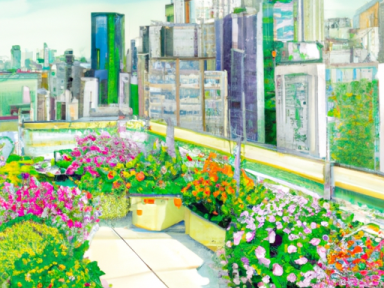City Gardening: Growing Your Own Food in Limited Space
In today’s uncertain times, it’s important to be prepared for any situation that may arise. One of the most crucial aspects of self-reliance is the ability to provide for oneself, especially when it comes to food. As urban dwellers, it may seem challenging to grow your own food with limited space, but with a little creativity and some planning, it is indeed possible.
Choose the Right Plants
When it comes to city gardening, selecting the right plants is essential. Opt for plants that can thrive in small spaces and containers. Herbs like basil, rosemary, and mint are perfect for windowsills and can add flavor to your meals. Leafy greens such as lettuce and spinach can also be grown in containers and harvested as needed. Additionally, cherry tomatoes, peppers, and beans are ideal for vertical gardening and can be trained to grow upwards on trellises or walls.
Utilize Vertical Gardening Techniques
With limited space, it’s important to make the most of every inch. Vertical gardening allows you to grow plants in layers, maximizing your yield. Use hanging baskets, wall-mounted planters, or create trellises to grow fruits and vegetables vertically. This technique not only saves space but also adds greenery to your surroundings, creating a pleasant and calming environment.
Make Use of Indoor Space
Take advantage of indoor spaces such as windowsills, balconies, and even countertops to grow your own food. Use small pots or containers to cultivate herbs or small vegetables indoors. Consider investing in hydroponic or aquaponic systems, which require less space and can provide a consistent supply of fresh produce.
Start Composting
Composting is an essential practice for any gardener, regardless of space limitations. It not only helps reduce organic waste but also provides nutrient-rich soil for your plants. Purchase a small compost bin or create your own using a plastic container. Use your kitchen scraps, yard waste, and shredded paper to create a compost pile. This will not only reduce your ecological footprint but also enhance the health and productivity of your city garden.
Learn the Art of Succession Planting
Succession planting is a technique where you continuously plant new crops to ensure a steady supply of fresh produce throughout the growing season. As soon as one crop is harvested, replant the area with another. This technique allows you to maximize your harvest from limited space. Research which crops can be successively planted in your area and plan your garden accordingly.
Watering and Pest Control
Proper watering is vital for the success of your city garden. Use a drip irrigation system or self-watering containers to ensure your plants receive the right amount of water without wasting any. Additionally, practice organic pest control methods such as companion planting, natural insecticides, or encouraging beneficial insects to help keep pests at bay. This will help protect your plants and ensure a healthy yield.
Celebrate the Harvest
Finally, celebrate your efforts and the fruits (and vegetables) of your labor. Harvest your produce with excitement and gratitude, knowing that you can rely on yourself to provide nourishment even in the most challenging circumstances. Share your knowledge and surplus produce with neighbors and friends, fostering a sense of community and resilience.
By implementing these tips, you can be well on your way to creating a thriving city garden that provides you with fresh, nutritious food. Remember, self-reliance is not just a lifestyle choice; it’s a crucial skill to have in an unpredictable world. It’s time to take action and prepare for a future where you can sustain yourself and your loved ones, no matter what comes your way.




GIPHY App Key not set. Please check settings